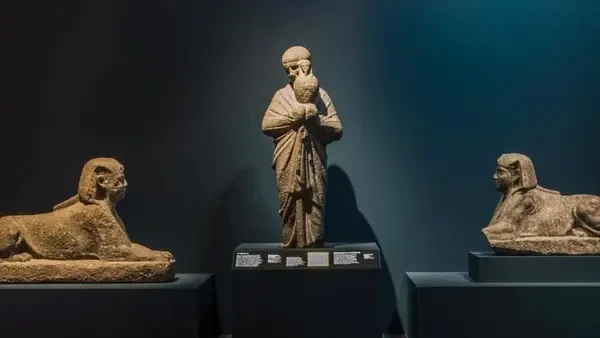Using Optical and Radar Sentinel Data in Building a Geographic Information System to Support and Documentation the Cultural Heritage Sites in Egypt (New Valley Governorate: Case Study)
Researcher:
Prof. Dr. Ghada Atta
Duty researcher:
Dr. Abdel Aziz Fathi Abdel Aziz Al-Fadali
Summary of project:
English Summary: Big Remote sensing data have played an important role in the field of managing and supporting cultural heritage sites as a result of the valuable information that can be obtained from that data, which would identify the changes in the land use/cover of lands close to heritage sites over a wide range in real-time and over the long term. Cultural heritage sites include natural and human heritage sites (tangible and intangible), which are irreplaceable and also invaluable. The preservation of heritage sites, whether tangible or intangible, is an important and pivotal factor in sustainable development issues, which can provide many investment opportunities, which is considered support for tourism activities and therefore the national economy, which is in line with the philosophy of the United Nations Educational, Scientific and Cultural Organization (UNESCO). Egypt is one of the most important countries rich in cultural heritage sites, as it includes among its flanks seven sites listed within UNESCO, some of which date back to millions of years, while others go back to the Stone Ages, pre-dynastic, Pharaonic, Greek, Roman, Coptic, until Islamic era. Undoubtedly, many cultural heritage sites in Egypt suffer from the dangers of human activities that may greatly threaten these sites. In addition, there are many sites that have historical importance that did not receive attention, especially in the governorates that the state recently sought to develop such as the New Valley Governorate. Therefore, this project aims to detect, monitor, and protect cultural heritage sites in the New Valley Governorate, in addition to evaluating and identifying the risks that threaten these sites using modern remote sensing techniques and GIS tools. Providing a lot of information that will help improve the quality of management of cultural heritage sites in the New Valley Governorate in line with the United Nations Sustainable Development Goals and Egypt's Vision 2030, is one of the main expected results of this project.
The most important outputs:
Spatial documentation of cultural heritage sites in New Valley Governorate, in addition to monitoring the environmental condition of those sites and working to preserve and sustain them.
The most important outputs:
1- Compiling some topographical maps of the study area for a group of ancient and modern dates.
2- Collecting some optical satellite images of the study area, dating back to ancient and recent dates.
3- Download some satellite radar data for the study area.
4- Conduct an initial inventory of archaeological and heritage sites in the study area.
5- Perform some preliminary steps (preprocessing) for topographic maps (Georeferencing, Subset).
6- Conduct some preprocessing of visual images (Sentinel-2).
7- Conducting some preliminary operations to monitor the encroachment of sand dunes using radar images (Sentinel-1).
8- A geographical database is being created.
9- Exploratory maps are being made for the New Valley Governorate.
10- Make a preliminary plan for the first field visit to the study area (November 2023).
11- A number of archaeological sites were visited in the period from 11/12/2023 to 11/18/2023 in three centers in the New Valley Governorate (Kharga - Dakhla - Paris) with the aim of documenting those sites and taking a group of pictures that monitor the condition of the antiquities and also monitor The risks that could threaten these sites. It has been noted that some sites are affected by the dangers of sand dunes, and a study of those risks will be conducted using Sentinel-1 radar data.
A collection of images that express the outputs











